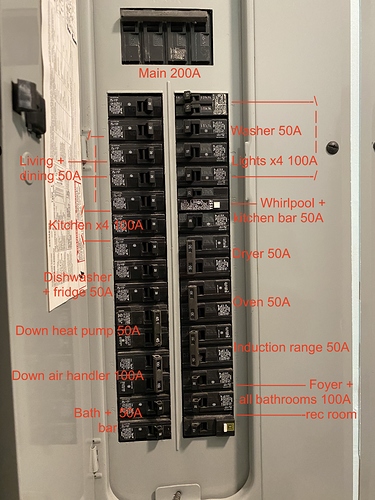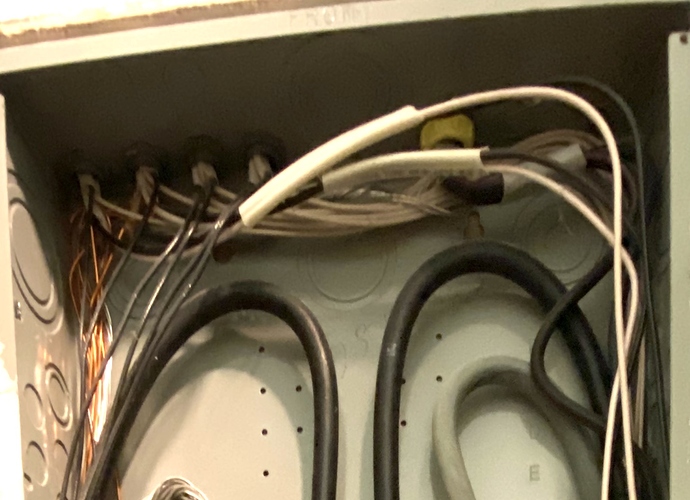I nearly bought a couple Sense units last weekend, and luckily IoTaWatt showed up a couple times in comments & reviews.  Dodged that bullet! I’ve read the docs and a bunch of forum threads, but with the store offline I’ve been taking in the info slowly, patiently wishing I could undertake this project while stuck at home anyway. Now with the store back up, it’s time to stop dreaming and get started!
Dodged that bullet! I’ve read the docs and a bunch of forum threads, but with the store offline I’ve been taking in the info slowly, patiently wishing I could undertake this project while stuck at home anyway. Now with the store back up, it’s time to stop dreaming and get started!
I’d like to eventually install solar panels, but figured I should get my current consumption under control first. We live in mid-Atlantic region with always hot summers but often chilly winters, too. Our least monthly consumption was last April at 2153 kWh, and most was July at 5750 kWh. Heat pump usage in summer will surely be the worst offender, but ~72 kWh on an exceptionally light day and almost 200 kWh on a mid-summer day is pretty nuts, and hopefully I’ll find some smoking guns that are addressable either with habit changes or equipment upgrades.
I have two main 200A split-phase panels in the laundry room. There’s also a main cut-off panel outdoors next to the meter, which is convenient. My plan is to start with 2 IoTaWatt units, 1 per indoor panel, and max them out in their CT inputs to get as full coverage as possible. The indoor panels are inconveniently flush-mounted into the wall, but if I can install a big double-dual-outlet Orbit-type box above the two panels, it should require the least drywall patching. Eye sores aren’t really an issue in there, anyway.
If I really want to try to capture as much detail as possible from the 2 indoor panels, I could put a 3rd IoTaWatt outdoors and measure the mains upstream instead of inside each indoor panel.
Next step: plan out which circuits to measure in each 200A panel and make a shopping cart of what to order. I’ll go back and reread some of the other case study threads, but first unknown to nail down is how many inputs I can expect to use.
My understanding is that there are 14 (not counting VT ref input 0), one of which I’d use for each panel’s main feed, leaving the other 13 which I could use for circuits or combinations of circuits coupled either with multiple conductors per CT or via 3.5mm stereo splitters. But in the store description of IoTaWatt, it says up to 12 branch circuits. Where am I losing that 13th? And if I move the mains measurement to outdoors, would that free me up to 14 circuit CTs on each indoor panel?
Thanks for tips, and looking forward to document my progress as I slowly set this up and eventually learn where all this power is going and if I can do anything about it before eventually sizing up a solar project! 




